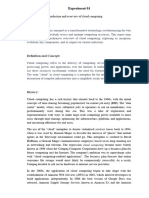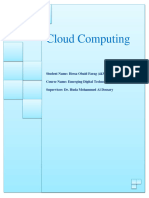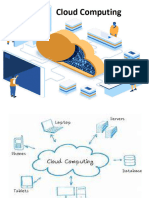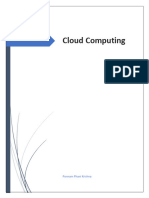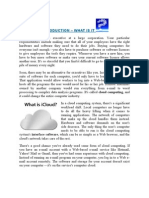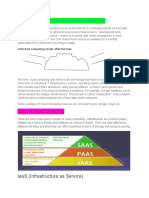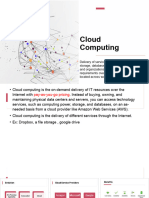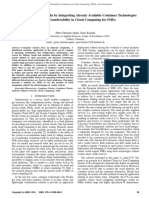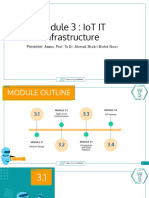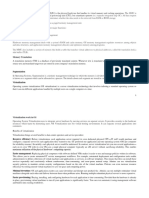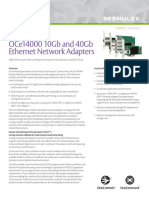0% found this document useful (0 votes)
8 views22 pagesIntroduction To Cloud Computing
The document provides an overview of cloud computing, defining it as the delivery of computing services over the Internet, which allows users to access files and applications from various devices without managing physical servers. It discusses the characteristics, layers, types (IaaS, PaaS, SaaS), and deployment models (public, private, hybrid) of cloud computing, along with its advantages and disadvantages. Additionally, it covers machine learning as a subset of artificial intelligence, detailing its types, applications, and real-world examples.
Uploaded by
jecira9799Copyright
© © All Rights Reserved
We take content rights seriously. If you suspect this is your content, claim it here.
Available Formats
Download as DOCX, PDF, TXT or read online on Scribd
0% found this document useful (0 votes)
8 views22 pagesIntroduction To Cloud Computing
The document provides an overview of cloud computing, defining it as the delivery of computing services over the Internet, which allows users to access files and applications from various devices without managing physical servers. It discusses the characteristics, layers, types (IaaS, PaaS, SaaS), and deployment models (public, private, hybrid) of cloud computing, along with its advantages and disadvantages. Additionally, it covers machine learning as a subset of artificial intelligence, detailing its types, applications, and real-world examples.
Uploaded by
jecira9799Copyright
© © All Rights Reserved
We take content rights seriously. If you suspect this is your content, claim it here.
Available Formats
Download as DOCX, PDF, TXT or read online on Scribd
/ 22







